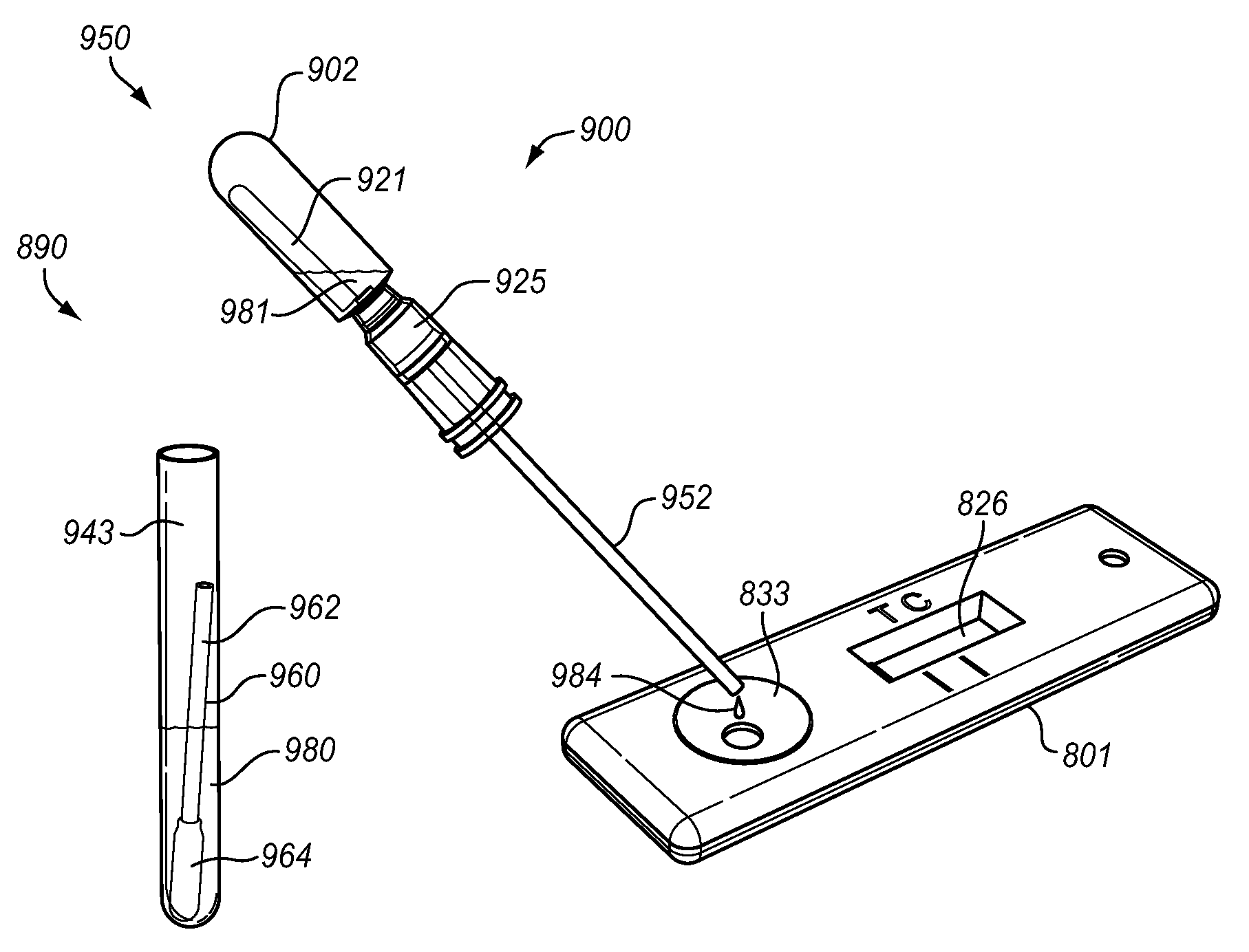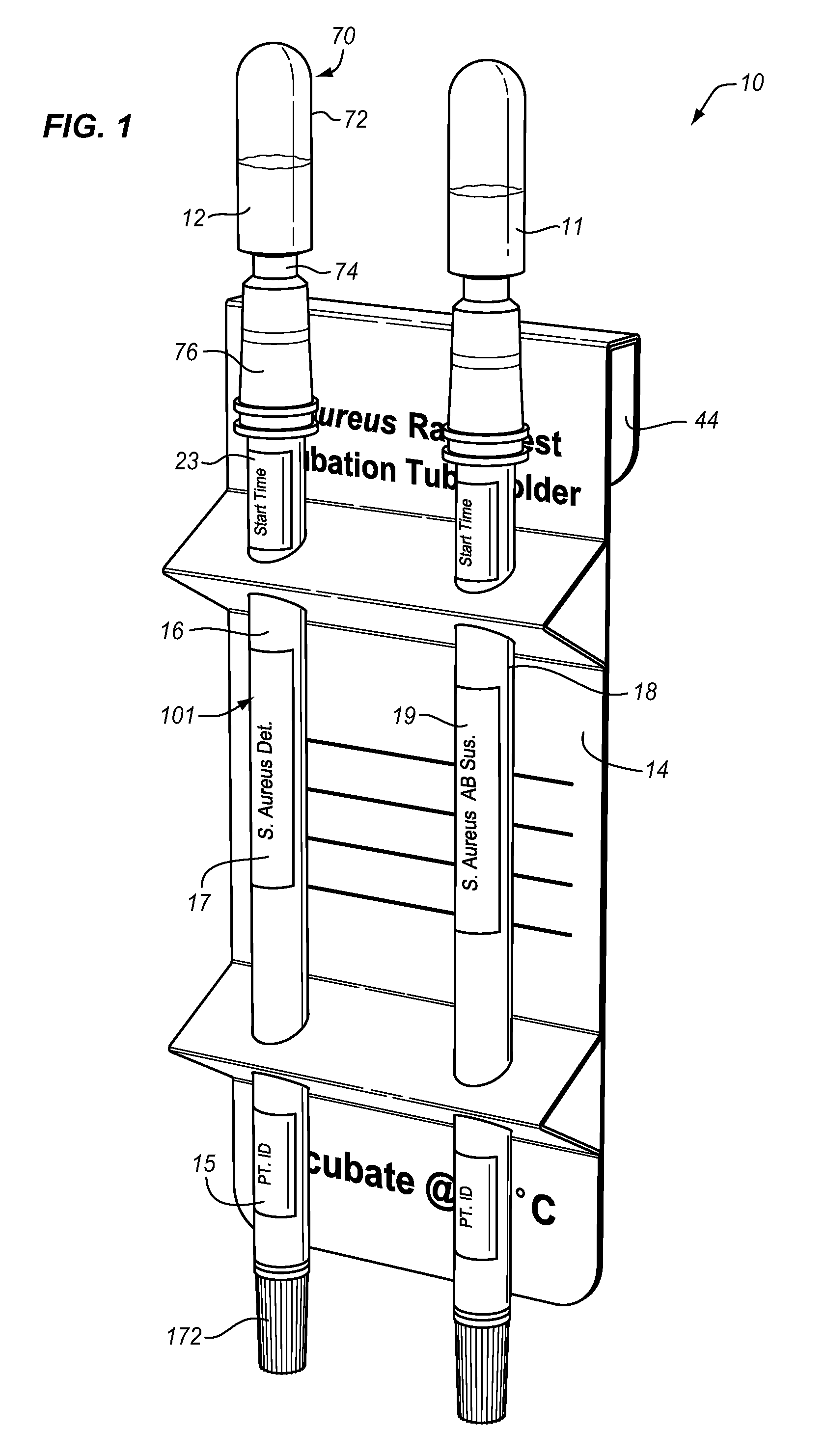Method and apparatus for bacteriophage-based diagnostic assays
a technology of bacteriophage and diagnostic assay, which is applied in the field of identification of microscopic living organisms, can solve the problems of affecting the commercial value of the product, and not working well outside the laboratory, so as to achieve rapid detection and identification of specific bacteria, and quickly determine the antibiotic resistance and susceptibility of the bacteria
- Summary
- Abstract
- Description
- Claims
- Application Information
AI Technical Summary
Benefits of technology
Problems solved by technology
Method used
Image
Examples
example 1
[0069]A single test unit MRSA screening test was prepared as follows. A basic broth was prepared by adding sodium pyruvate in a concentration of 27 μg / ml to a TSB (tryptic soy broth) base. This basic broth was autoclaved at 121° C. for 55 minutes. The following ingredients then were added: lauric acid to a concentration of 12 μg / ml (micrograms per milliliter); deferoxamine to a concentration of 500 μg / ml; Na cefoxitin to a concentration of 2 μg / ml; and polymyxin E to a concentration of 10 μg / ml. A phage “cocktail” containing three varieties of phage, namely MP112, MP131, and MP506, at a concentration of 1.67×105 pfu / ml for a total phage concentration of 5×105 pfu / ml was added to the broth. A total both volume of 0.75 ml was placed in bulb 72, and the MRSA screening test was performed as above with an incubation time of eight to twenty-four hours, preferably twelve hours. The incubation time is generally somewhat variable as hospital staffs are busy and come on and off duty at variou...
example 2
[0070]An MRSA single unit screening test as described in Example 1 above was prepared, except that the antibiotics were not added to the broth liquid in the bulb 72, but instead were added via discs, such as 124. The discs were paper discs, specifically Alstrom #237, but any absorbent disc or material can be used. The discs are impregnated with antibiotic by dissolving the antibiotics in a solution, preferably 70% methanol, applying the solution to the discs, and drying. The discs provided Na cefoxitin to a concentration of 2.75 μg / ml and polymyxin E to a concentration of 35 μg / ml. The discs may be used when it may be desirable to store the units 16, 18 for a period of time before use. In liquid form, Na cefoxitin is stable only for a few days, and polymyxin for a few weeks. Thus, a disc is used when the units may be stored longer than a few weeks.
example 3
[0071]Another MRSA single unit test was prepared as described in Example 1, except that the Na cefoxitin was provided in a disc.
PUM
 Login to View More
Login to View More Abstract
Description
Claims
Application Information
 Login to View More
Login to View More - R&D
- Intellectual Property
- Life Sciences
- Materials
- Tech Scout
- Unparalleled Data Quality
- Higher Quality Content
- 60% Fewer Hallucinations
Browse by: Latest US Patents, China's latest patents, Technical Efficacy Thesaurus, Application Domain, Technology Topic, Popular Technical Reports.
© 2025 PatSnap. All rights reserved.Legal|Privacy policy|Modern Slavery Act Transparency Statement|Sitemap|About US| Contact US: help@patsnap.com



